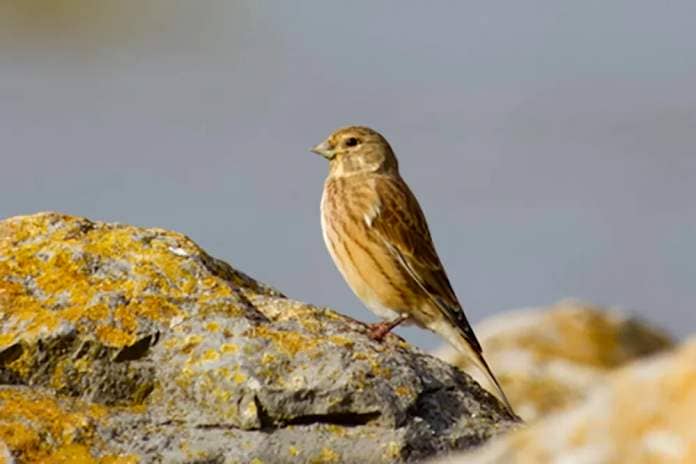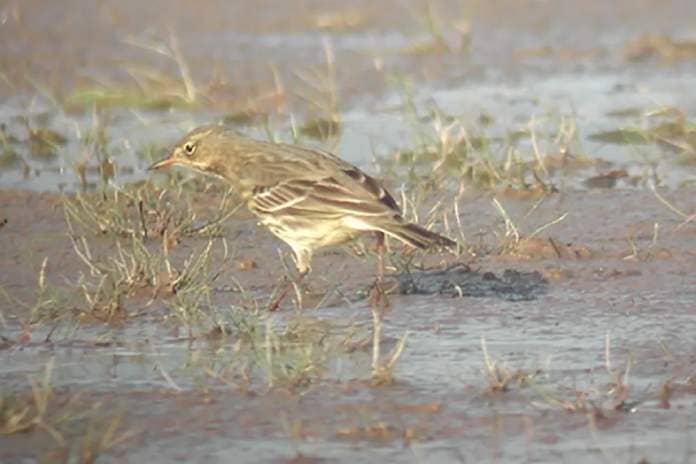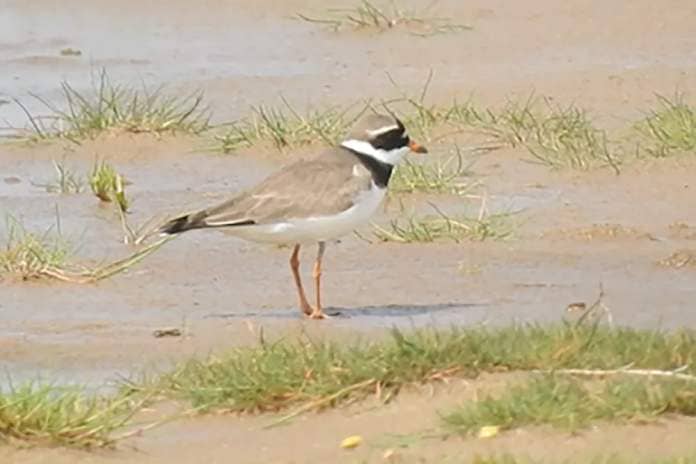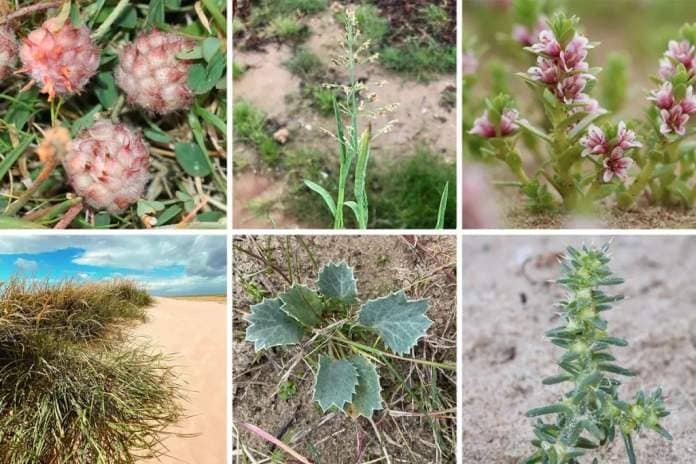Over the last few centuries, and from probably long before, immense volumes of sand have been arriving on North Wirral.
The Hyle Sand, a colossal sandbank that in the 1600s was above the water on all but the biggest spring tides and stretched from near Colwyn Bay, broke up and started coming ashore.
The beach at Hoylake has received so much of that sand that the Hyle Lake was lost in the late 1800, the mudflats have become sandflats and a band of land closest to the promenade is now so far above sea level that it is dry land.
The new land formed between the current beach line and the promenade is some of the rarest and most protected habitat in the world; embryo dunes and Atlantic salt meadow.
Though it’s the flora that makes Hoylake truly exceptional, there are some remarkable fauna that also rely, some exclusively, on places like Hoylake’s new green beach.
Around the world dune specialist species are facing extinction as their habitat is lost to a combination of rising sea levels, erosion and encroaching development, or being prevented from evolving by walls of concrete. This is why Hoylake is so important. It’s an evolving, accreting coastline.
There are specialist Bees that require the pollen of just one species of flower to raise their young. We have an amazing variety of solitary bees in Hoylake now, including Vernal, Sand Pit, Sea Aster, Ashy, Orange-tailed and Grey-banded mining bee. We can expect other dune specialist invertebrates to colonise over the coming years, including the red-listed Sandhill Rustic
There are other species that are surviving in our depleted coastal habitats, but are now increasing in numbers due to improved feeding opportunities. Natterjack Toad has already been recorded at Hoylake for example, and as the dunes and dune slack develop, there is every chance that they will become resident.
Jane Turner, the County Bird Recorder told Birkenhead News that it’s so uplifting to see what has happened once the regime of mechanical and chemical treatment has stopped.
Jane said, “This has allowed plants other than just Spartina, which is spread by raking and is tolerant to weedkiller, to flourish. Every day new life appears. It’s a virtuous circle. New plants attract new invertebrates, and both attract more birds.
“”I’m hoping that I will see Skylarks, Ringed Plovers and maybe even Little Terns breeding here within my lifetime.”
Below, Jane has chosen some of her favourite residents of Hoylake Beach from the animal world.
Linnet (Carduelis cannabina)

Linnets are small gregarious finches associated with moorland and arable farmland.
They have suffered an 80% reduction in population since the 1960s, leading them to becoming added to the conservation red list and getting their own biodiversity action plan.
They breed on Hilbre and a few pairs were clinging on at the Royal Liverpool Golf Club. Since the succession vegetation was allowed to recover, a flock of up to 100 Linnets has been seen feeding on seeds.
There is almost always a flock somewhere on the green beach, which stay close together and make a pleasing twittering call when they get disturbed.
Sea-Slater (Ligia oceanic)




At 3cm long, Sea Slaters, or Jaspers as I’ve called them since childhood are the biggest British members of the oniscid isopods which includes the much more familiar but less intimidating Woodlice.
They live in crevices on the sea wall, Red Rocks and around the lifeboat green, and come out at night to feed on organic detritus.
If you want to see one, look in narrow dark cracks, or take a torch out at night. Try not to scream if you find one, or take one home to surprise your mother with, as I did as a 10-year-old!
Scandinavian Rock Pipit




A little bigger and more robust than the more familiar Meadow Pipits, Rock Pipits are almost exclusively found on coasts.
The British race petrosus, breeds on Hilbre but seldom if ever leave the island, being one of the most sedentary species known. In winter we also get migrants of the Scandinavia race, littoralis.
Unlike the British birds which as their name suggests, are more or less glued to rocks, the birds that travel here for the winter like to feed on saltmarshes and green beaches as well as often being seen on the sea wall.
There are small numbers at Hoylake taking advantage of the new habitat where they often associate with Wagtails.
Sea-aster Bee (Colletes halophilus)




Sea-aster Bees are globally threatened solitary bees which build nest burrows where they feed their larvae over winter on stored Sea-aster (only) pollen.
The burrows, made in sandy substrates, can survive occasional inundation by seawater.
Until 2021 they were only known from the east coast between the Thames and Humber Estuaries and the adjacent North Sea coasts, but small colonies have been confirmed at Heswall and Marshside, and in 2022 at least six females were found at Hoylake.
They are globally threatened due to coastal squeeze – Atlantic salt meadow, where Sea Aster grows, is a rare habitat, being lost to coastal development and rising sea levels.
Ringed Plover Charadrius hiaticula




Whilst most shore waders declined at Hoylake in the early 80s, aside from what may yet prove to be a one-off return to 20th Century numbers in February 2023, Ringed Plovers are here in record numbers.
They are surface pickers, by sight, rather than probers, thrive on sand rather muddy substrates, and are attracted to the bloom of tiny Hydrobia snails that occur in the pioneer zone.
They used to breed in the dunes of north Wirral, and have just returned as a breeding species on the Sefton coast. Maybe one day there will be a quiet enough corner at Hoylake for an attempt here.
Common Blue (Polyommatus icarus)








As its name implies, Common Blues are the commonest Blue Butterfly in the UK.
So far, they have been using the many flowers on the green beach as a nectar source, commuting from North Parade gardens, but since several of their larval foodplants, including Birds-foot trefoil, Black Medick and Common Restharrow are now establishing, we can expect a colony of these stunning insects to follow close behind.
Hopefully, the next butterfly to colonise will be the endangered Grayling, whose favourite nectar source, Sea Holly, should be flowering by 2023 and whose larval foodplant, Marram Grass is also establishing.




Why not follow birkenhead.news on Facebook, Instagram, and Twitter? You can also send story ideas to [email protected]


